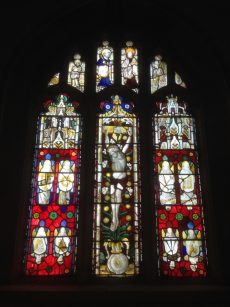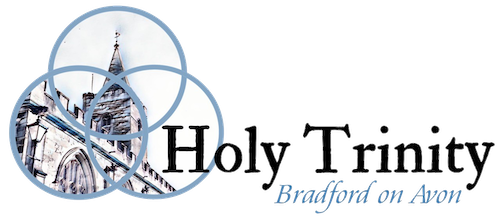St Mary the Virgin, Westwood
Services
JULY 2024
Sunday, 28 July
11.15am – Morning Prayer
AUGUST 2024
Sunday, 11 August
11.15am – Holy Communion
Sunday, 18 August
11.15am – Mattins
Sunday, 25 August
11.15am – Morning Prayer
All welcome. Please contact Netty Hucknall, the Benefice Administrator, in the first instance on: 01225 868318 or beneficeoffice@htboa.org
History
The Parish of Westwood includes the villages of Upper and Lower Westwood, Iford, and that part of Avoncliff situated on the south bank of the River Avon. Traditionally, Lower Westwood was a sheep-farming village and Church of England, while Upper Westwood was a stone-quarrying community and Methodist. Avoncliff developed around woollen mills on the north and south banks of the river. The Methodist Chapel in Upper Westwood and the Baptist Chapel in Lower Westwood have closed and the church of St Mary the Virgin is the only place of formal worship in the villages.
Westwood is recorded in Charters of 983 and 987 AD; it is possible there was a Saxon church on the site but it is also possible that the area was served by St Laurence’s church in Bradford on Avon, as that dates from before 705 AD. There are no early records concerning the church but Westwood was part of the estate of Winchester Cathedral recorded in the Doomsday Survey. The church was part of the Bradford on Avon Parish probably as early as 1299 and remained so until 1876. It acted as a chapel to Holy Trinity and was usually served by the curate, the first recorded being William Butler in 1535. In 1876 Westwood became a parish in its own right, the first recorded vicar being William Ruscombe Wollen. Since that time there have been seven vicars (or rectors since 1983 when Wingfield was incorporated into the benefice) culminating with Ronald Lowrie who retired in 2013 at which time Westwood reverted to being part of the Holy Trinity benefice with the Revd Joanna Abecassis as rector.
The church and neighbouring National Trust Manor House date back to the late 12th century, the chancel dating from the late 12th or early 13th century as the lancet windows indicate. There is a lintel over the Priest’s Door which is a single slab of stone with a trefoil in its lower surface forming the door head. The carving on the stone could be pre-Conquest.
The church nave was re-built in the 15th century in the perpendicular style, followed by the tower and chapel on the north side some 50 to 70 years later. The distinctive tower with its beautifully carved cupola can be seen from miles around. Similar to other churches in Wiltshire and Somerset, it was probably built by the same group of masons. Unlike others, the tower here has a spiral staircase that leads to the belfry, which hosts a peal of six bells.
The interior has some unique items worthy of note. The medieval glass of the chancel, believed to be 15th century, is a beautiful and striking feature. The panel of the east window depicting the Incarnation of Christ is unusually symbolised by lilies and his crucifixion. The symbolism of lilies is exclusively English and it is believed that only seven instances exist. The angels holding shields bearing symbols of the Passion in the side panels of the east window and most of the glass in the lancet windows are believed to be of the same date.
The nave was again re-built in the late 18th century and holds only a little of the original glass, although the circular crucifixion scene on the lancet window on the north side is believed to be by a 16th century Flemish artist. The chancel was then restored in 1840-41 when the south wall was rebuilt. Early elements — the window and the lintel over the door, etc. — were retained.
The font is early 13th century and has an elaborately carved 16th century oak cover, a replica of the cupola on the turret of the tower. Above the font on the west wall is a carved winged demon which dates to the early 16th century. He is known as either ‘the old lad of Westwood’ or ‘the devil of Limpley Stoke’ and is gnashing his teeth at every new child baptized. Underneath is a faint inscription which reads ‘Resist me and I will flee’.
In modern times the pews were replaced in the 1960s, a stone altar was added to the north aisle chapel in 1975 and an aumbry in 1977. The six bells were recast from the earlier four bells and re-hung in 1979. An electronic organ was introduced in 2003 replacing a 1987 instrument. The Tower was restored in 2000.
David Chalmers
Contact
Rector: Vacant
Churchwardens:
Chris Edwards, chris.edwards1959@gmail.com
Tel: 07503 875111
PCC Secretary:
Jill Ross – jillbenedictross@gmail.com



